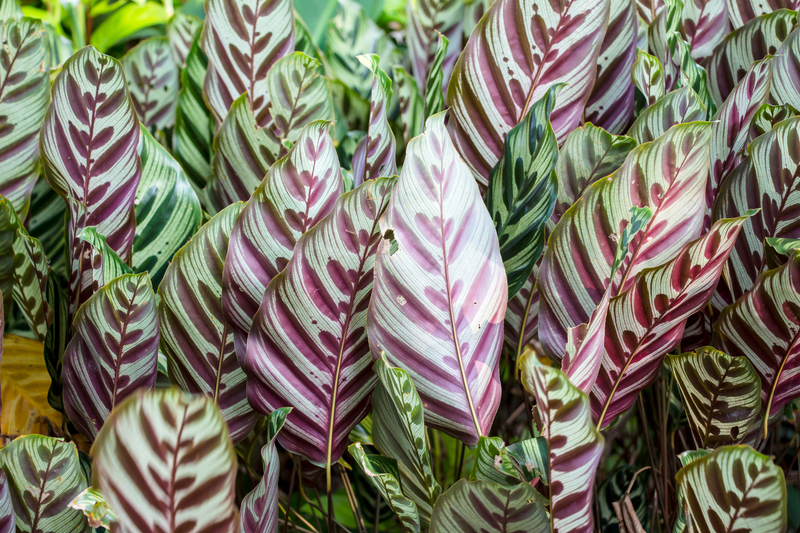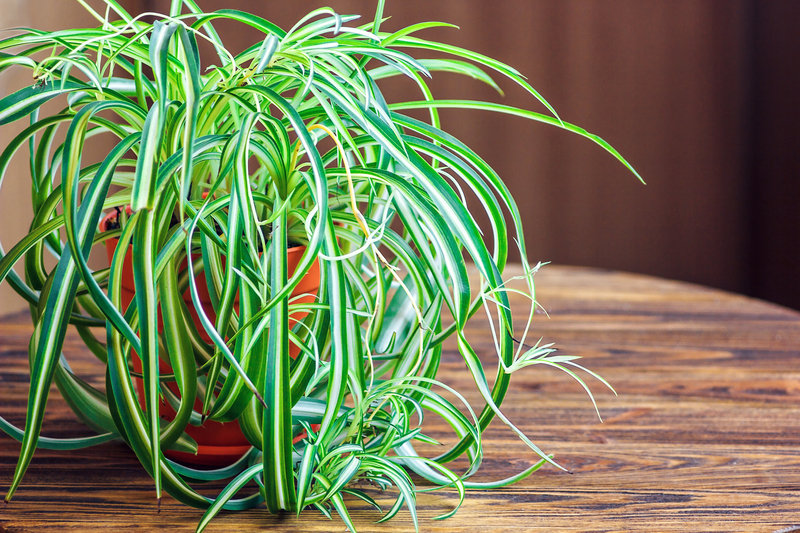Essential Tips for Successful Vertical Gardening
Posted on 12/09/2025
Essential Tips for Successful Vertical Gardening
Vertical gardening is revolutionizing the way we grow plants, especially for those with limited space. Whether you're a seasoned gardener or a beginner, mastering vertical gardening techniques can help you maximize your yield, beautify small spaces, and contribute to a sustainable environment. This comprehensive guide offers essential tips for successful vertical gardening--from planning and setup to plant selection and maintenance.
What Is Vertical Gardening?
Vertical gardening, also known as living walls or green walls, involves growing plants upward rather than outward. By using structures like trellises, shelves, or containers mounted on walls, vertical gardening makes the most of limited floor space and turns any bland surface into a lush sanctuary.
Key Benefits of Vertical Gardening
- Space Saving: Utilize vertical areas indoors or outdoors, perfect for urban homes or apartments.
- Improved Air Quality: Plants filter toxins and produce oxygen, enhancing the environment.
- Pest and Disease Control: Raising plants off the ground can help reduce exposure to soil-borne pests and diseases.
- Easy Harvest: Harvesting is more accessible, as plants are within easy reach.
- Aesthetic Appeal: Create stunning green displays that enhance any space.

Planning Your Vertical Garden
A fundamental step toward successful vertical gardening is thoughtful planning. Consider the following stages as you conceptualize your project:
1. Assess Your Space
Begin by identifying where you want your vertical garden--indoors, outdoors, on a balcony, or along a fence. Measure the area to determine how much space you have for vertical garden structures and ensure the spot receives adequate sunlight for the plants you intend to grow.
- Sunlight: Observe how much sun the area receives each day (full sun, partial shade, or shade).
- Accessibility: Make maintenance easy by selecting a location within reach.
- Protection from Elements: Consider shelter from strong winds or heavy rainfall.
2. Choose the Right Vertical Garden Structure
There are various types of structures you can use for vertical planting:
- Trellises and Lattices: Best for climbing plants like beans, cucumbers, and sweet peas.
- Wall-mounted Planters: Ideal for herbs, flowers, or small vegetables.
- Pocket Planters: Fabric or felt pockets that hang vertically, great for lightweight plants.
- Stacked Pots: Use tiered containers or stacked pots for a compact and decorative display.
- Pallet Gardens: Repurposed wood pallets filled with soil, suitable for patios and balconies.
Choosing the Best Plants for Vertical Gardens
Not all plants are suitable for upright gardens. When selecting greenery for your vertical garden wall, consider the following:
- Root System: Plants with shallow or compact roots perform best, as planter space is often limited.
- Growth Habit: Choose vining, trailing, or compact plants that fit the vertical orientation.
- Lighting Needs: Pick species that match the light conditions of your chosen spot.
Recommended Plants for Vertical Gardens
- Herbs: Basil, thyme, cilantro, oregano, chives, parsley, mint
- Leafy Greens: Lettuce, spinach, arugula, kale, Swiss chard
- Vegetables: Tomatoes (cherry or small), peppers, dwarf beans, peas, radishes
- Flowers: Petunias, nasturtiums, viola, fuchsias, lobelias
- Succulents: Sedum, echeveria, jade plant, burro's tail
- Vines and Climbing Plants: Sweet pea, jasmine, ivy, morning glory
Essential Tips for Successful Vertical Gardening
1. Use Quality Soil and Compost
Soil is the foundation of a thriving vertical garden. Since vertical planters have less soil than traditional beds, it's crucial to use a high-quality potting mix enriched with organic compost. This ensures optimal drainage, root health, and nutrient availability.
- Well-Draining Mix: Prevents waterlogging and root rot.
- Lightweight: Reduces stress on vertical structures.
- Enrich with Compost: Maintains fertility throughout the growing season.
2. Prioritize Irrigation and Water Management
Water management is one of the most critical aspects of vertical gardening success. Because gravity pulls water downwards, the top layers often dry out faster than the lower sections.
- Drip Irrigation: An automated or drip irrigation system provides even moisture throughout the vertical setup.
- Self-watering Planters: Consider planters with built-in reservoirs to prevent drying out.
- Regular Monitoring: Check soil moisture frequently, especially during hot or windy conditions.
3. Ensure Proper Support and Anchoring
A sturdy vertical structure is key to safety and longevity. Secure walls, fences, or installations must be able to support the weight of plants, soil, and water.
- Reinforce Frames: Use anchors, screws, or brackets to firmly attach planters.
- Lightweight Materials: Prefer lighter containers and soil blends for upper levels.
- Distribute Weight Evenly: Avoid putting heavy plants at the top, as it may cause the structure to lean or collapse.
4. Fertilize Regularly
Nutrients in vertical garden soil can deplete quickly due to limited volume and frequent watering. Apply liquid fertilizer or slow-release pellets to keep your plants healthy and productive.
- Follow Plant Needs: Adjust fertilizer type and frequency according to the plant's growth stage.
- Organic Options: Consider compost tea, worm castings, or fish emulsion for organic vertical gardening success.
5. Prune and Maintain Your Plants
Regular pruning ensures that plants remain healthy, increase airflow, and prevent overcrowding. Remove yellowing leaves, spent flowers, and any signs of disease to promote vigorous growth.
- Train Vines: Guide climbing plants onto trellises for neat, vertical growth.
- Monitor for Pests: Inspect for aphids, mites, or fungal issues.
- Harvest Frequently: Picking herbs and vegetables encourages further production.
Creative Ideas for Vertical Garden Designs
Elevate your green space with inventive vertical garden ideas:
- Living Picture Frames: Fill frames with a mix of succulents or flowering annuals for wall art that grows.
- Hanging Bottles: Repurpose plastic or glass bottles as cascading planters.
- Pallet Gardens: Use horizontal or upright pallets for herbs and compact vegetables.
- Modular Living Walls: Professional systems allow you to add more panels as your garden grows.
- Ladder Gardens: Lean or hang small containers from a ladder for an eye-catching garden display.
Mixing Aesthetics with Functionality
Combine edible plants with ornamental flowers for color, fragrance, and harvest. Use colorful containers or patterns for an artistic statement. Add LED lights for nighttime ambiance on balconies or patios.
Common Challenges in Vertical Gardening and How to Overcome Them
- Uneven Watering: Water trickles downward, leaving the top dry. Solution: Install a drip or self-watering system and plant drought-tolerant species at the top.
- Limited Root Space: Shallow containers can stunt growth. Solution: Pick plants with compact roots, and periodically refresh soil and nutrients.
- Pest Problems: Vertical gardens can still face pest invasions. Solution: Use organic pest control and inspect plants regularly.
- Structural Weakness: Improperly anchored planters can fall. Solution: Secure your frames and use lightweight materials.
- Sunlight Exposure: Walls or structures may shade sections of the garden. Solution: Rotate plants or choose shade-tolerant species for less sunny spots.
Year-Round Vertical Gardening Tips
With smart planning, vertical gardens can thrive year-round. For colder climates, move portable planters indoors during winter. Use grow lights for low-light months and mulch container surfaces to retain moisture.
- Rotate Crops: Change plants seasonally to keep soil healthy.
- Insulate Wall Gardens: Apply bubble wrap or insulating materials around containers in winter.
- Plant Winter Greens: Kale, chard, or hardy herbs can survive with minimal protection.
Helpful Tools and Accessories for Vertical Gardening
Modern vertical garden setups often benefit from helpful accessories:
- Automatic Timers: Simplify irrigation schedules for busy gardeners.
- Moisture Meters: Monitor soil dampness to avoid over or under watering.
- Plant Labels: Keep track of what's growing and plan rotations.
- Lightweight Trowels: Make planting and re-potting more accessible in tight spaces.

Sustainability and Eco-Friendly Practices
Vertical gardens promote environmental responsibility by using water efficiently and increasing urban greenery. For even greater sustainability:
- Use Recycled Materials: Build planters and supports from reclaimed wood, plastic bottles, or metal shelves.
- Compost: Recycle plant trimmings and kitchen waste into rich soil amendments.
- Collect Rainwater: Use rain barrels and gravity-fed irrigation for eco-friendly watering.
Conclusion: Start Your Vertical Gardening Adventure
Adopting a vertical gardening approach can transform any small space into a productive, beautiful, and healthy environment. By following these essential tips for successful vertical gardens--from careful planning, proper plant selection, soil management, and regular maintenance--you can cultivate a lush vertical oasis that provides food, improves air quality, and uplifts your spirits. Whether you dream of fresh herbs, vibrant flowers, or a living wall in your home or apartment, now is the perfect time to start your vertical gardening journey.
Happy vertical gardening!

